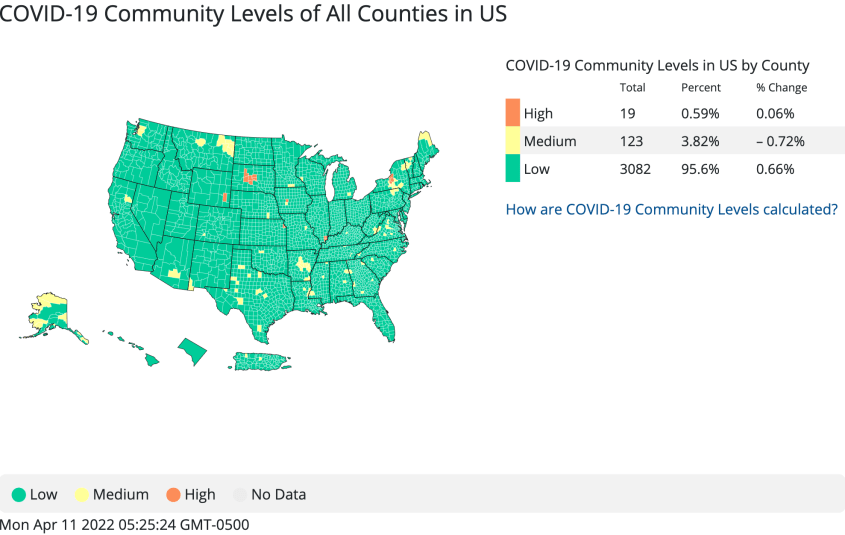Why this may be the start of 'America's 1st so-what COVID wave'
COVID-19 — and more specifically, the BA.2 "subvariant of the Omicron variant that tore through the U.S. this winter — is spreading," Sumathi Reddy writes at The Wall Street Journal, and given that people are mostly testing at home, and this variant has fairly mild symptoms (if any ) among vaccinated people, "it is likely that public-health statistics are significantly undercounting cases right now." Top public health officials are predicting a surge in cases, like parts of Europe are experiencing.
But there's a good chance "you're going to the movies and eating indoors," Reddy adds. "Your kid stopped wearing a mask to school; you no longer wear one to work. After two years of COVID precautions, you finally feel normal again. Well, mostly." The Centers for Disease Control and Prevention's (CDC) national COVID map is almost entirely low-risk green.

Centers for Disease Control and Prevention
CBS News explains that this may end up being "America's first so-what COVID wave," because of vaccines and treatments, and crucially, because so few people are being hospitalized.
Rather than focusing on case counts, "hospitalization rates are likely a more accurate indicator of transmission and reflect the severity of infections," the Journal reports. And the U.S. "is currently reporting 14,802 coronavirus hospitalizations, the lowest mark since reporting began in July 2020," CNN's Ryan Struyk tweeted Sunday night, citing Health and Human Services data.
When should you worry and change your behavior? "Consider both the rate of increase as well as how long cases have been rising," Reddy reports. "A steady weekly rise of 5 percent for multiple weeks might signal that it's time to resume some protective measures, such as masking indoors," but "if cases are increasing by 50 percent week over week, that's a red flag."
Another sign things are feeling more "normal" on the COVID-19 front is that President Biden's approval rating on his response to the pandemic has risen to 58 percent, from 50 percent in January, ABC News reported Sunday. That poll, conducted with Ipsos, surveyed a national sample of 530 adults between April 8-9, and its margin of sampling error is ±4.9 percentage points.
You may also like
The best starting Wordle word has been revealed
5 cartoons about Russian disinformation
NBC News staffers reportedly miffed about MSNBC's planned Psaki hire

